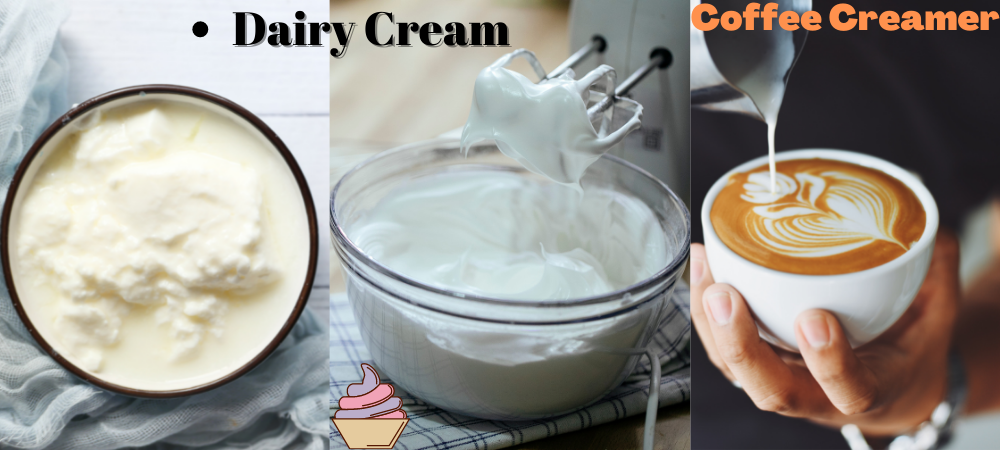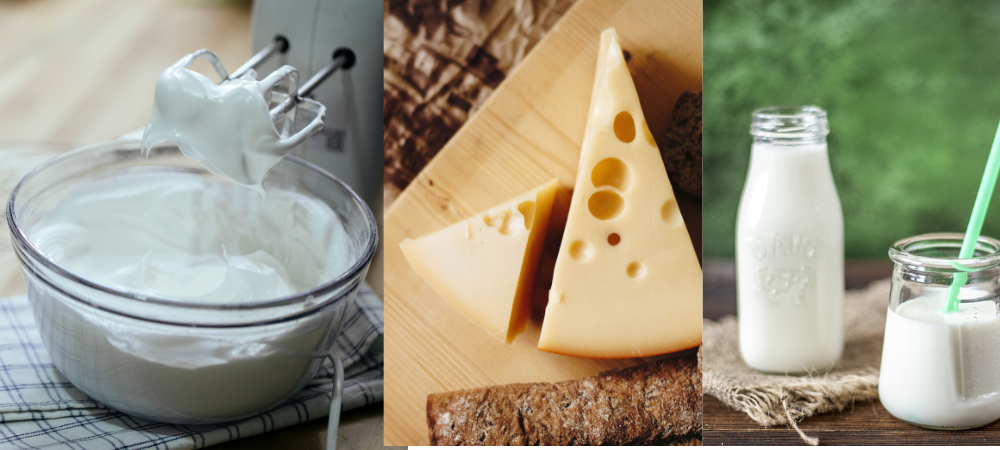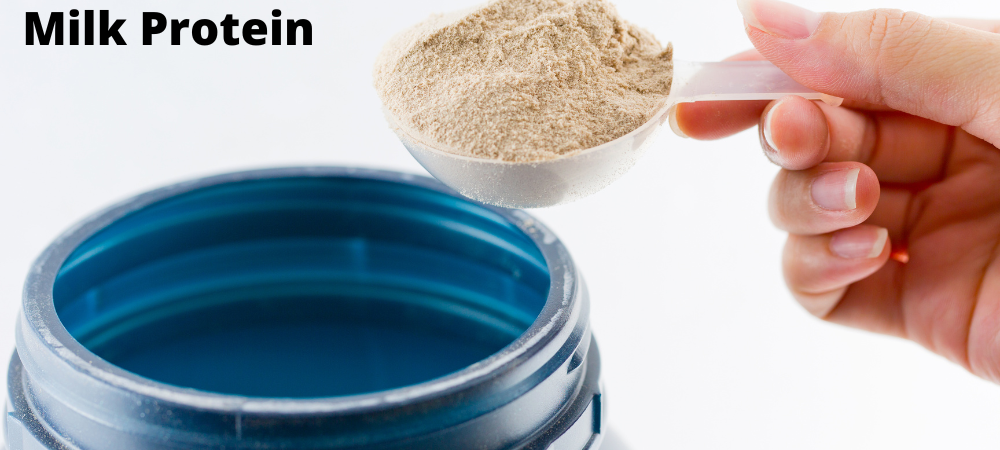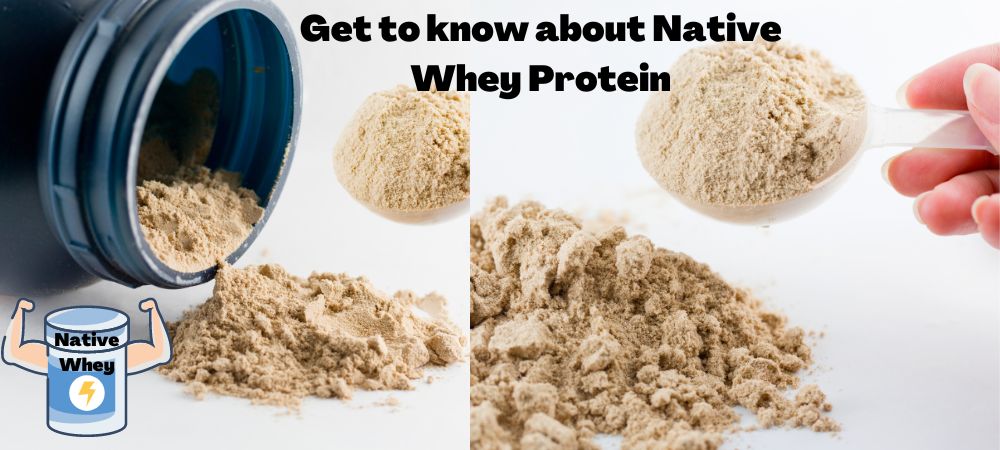We are all aware of a famous milk-based product known as dairy cream or milk cream. It has been widely utilized in different recipes consumed in our daily diet. However, the assumptions of people about cream as a fat-filled product can lead to its restricted usage.
Despite having high calories, dairy cream can contain different beneficial nutrients. This article will outline everything you should know about milk or dairy cream, including types, benefits, uses, nutrient contents, and disadvantages.
What is Dairy Cream?
The cream is actually a high-fat proportion of fresh dairy milk. Naturally, fresh milk can be separated into cream and milk. The fat content pushes the cream to reach the top surface of the milk. Then, it is skimmed off prior to further processing (1).
But, the natural separation process for cream is slow. Thus, dairy industries utilize the centrifugal process to prepare the cream (2).
It is important to note that cream doesn’t only contain fat content. It also contains valuable ingredients such as fat-soluble vitamins (i.e., vitamins A, D, and E) and minerals like calcium and phosphorus.
Types of Dairy Cream
There are different types of milk cream available in the market. Depending on fat content, fresh cream is divided into the following types.
- Heavy cream or Heavy whipping cream: It contains at least 36% fat.
- Light whipping cream: It is also known as whipping cream and contains 30-36% fat content.
- Light cream: It is also referred to as table cream or coffee cream and contains 18-30% milk fat content.
- Half and Half cream: It contains an equal proportion of both milk and cream with 10.5% fat content (2).
Importance of heavy whipping cream
Heavy whipping cream is also famous as heavy cream. Industrially, it is manufactured by homogenizing and pasteurizing cream to ensure that the milk’s fat content is emulsified and combined with the milk. In simple terms, it is the homogenized blend of milk and milk fat (3).
The process of making heavy cream also involves the application of high pressure and temperature in order to increase the shelf life and enhance stability.
The high-fat content can clump together by whipping or churning of heavy cream. The whipping allowed liquid cream to form the whipped cream. If churning is allowed for some more time, this whipped cream makes another product called butter (4).
Interestingly, the remaining fluid, which is achieved when heavy whipped cream turns into butter, is another dairy product referred to as buttermilk (5).
Since heavy whipping cream contains high-fat content (at least 36%), it also has high calories. More importantly, it is a good source of beneficial nutrients like choline, vitamins, and minerals. It is estimated that the nutritional content of 1 cup of whipped cream (120 grams) is about (1):
- 43 grams of fat
- 3 grams of carbohydrates
- Vitamin A (55 percent of Daily Value)
- Vitamin D (10 percent of Daily Value)
- Vitamin E (7 percent of Daily Value)
- Vitamin K (3 percent of Daily value)
- 3 grams of protein
- 408 calories
- Calcium and Phosphorus each (6 percent of Daily value)
- Choline (4% of Daily value)
The presence of vitamins and minerals like calcium and phosphorus, along with choline in heavy whipping cream, ensures normal body functioning.
For instance, vitamin A is necessary for the eyes. Choline has a role in the early development of the brain and metabolism. Moreover, calcium and phosphorus both have a role in bone health (1).
Importance of light whipping cream
Whipping or light whipping cream is made in similar ways to heavy cream. The main difference between these two is the proportion of fat. In light whipped cream, the fat content adjusted between 30 to 36%.
Dairy industries make cream products by the inclusion of a specific proportion of milk fat in fresh milk.
Other than high fat and caloric value, it also contains fat-soluble vitamins (A, D, E, K) and some minerals.
One tablespoon (15 mL) of whipping cream contains about:
- 44 Calories
- 4.6 grams of Fat
- 0.3 grams of Protein
- 0.4 gram of Carbs
- 10.4 mg of Calcium
- 9.15 mg of Phosphorus
- 2.5 mg of Choline (6).
Whipping cream can be used as a replacement for light whipping cream in many food products or recipes.
Importance of Half and Half
Half and half are prepared by mixing milk with fat in equal proportions. Generally, this type of cream contains 10.5% fat; however, manufacturers are allowed to keep this fat content under 18% (2).
In the end, the final product is thinner and contains lower fat content as compared to whipping or heavy whipping cream.
It has a good mouthfeel and lighter taste which is required for various food recipes.
Similar to other types of creams, half and half also contain essential vitamins and minerals.
The variation is half and half has brought fat-free creams, which are widely available in the markets. In order to produce such fat-free cream, skim milk is blended with corn syrup in place of cream (7).
Importance of Coffee Creamer
Coffee creamer is actually a non-dairy product, and it is also famous as light cream or table cream.
However, the industries can also produce dairy-based light cream by following the milk fat content requirement of 18-30% as set by the FDA (8).
The non-dairy coffee creamer is formed by mixing sugar and water with vegetable oil. Heavy ingredients can vary depending on the manufacturer (brand).
It is usually loaded with added sugars, flavors, and other additives in order to provide specific tastes and characteristics.
The common coffee creamer can contain high sugar content (up to 5 grams) in a single serving, which could exceed one teaspoon of sugar (7).
Depending on the ingredient, different varieties of coffee cream are available in the markets. These include light, fat-free, sugar-free, flavored, liquid, and powdered (9).
Nutritional and Health Benefits of Dairy Cream
It is evident that all types of dairy cream contain high fat, valuable vitamins (especially vitamins A, D, E, and K), and minerals such as calcium and phosphorus.
Generally, saturated fat is present in all major creams, which is thought to exhibit a negative impact on health, especially cardiovascular diseases.
However, modern scientific research shows that the risk of heart disease does not increase with low or high-fat dairy products like cream (10 , 11).
Fat-soluble vitamins are more easily absorbed when you consume them with fat-like cream.
Vitamin A in cream is good for eyes and immunity. Vitamin D plays a critical role by absorbing calcium and phosphorus; thus, essential for bone health. Similarly, choline is also present in creams which is helpful in metabolism (12).
Calcium and phosphorus are also essential for human bones.
High calories in the cream can be beneficial in boosting energy if you are going low in energy.
Vitamin E is a natural antioxidant that helps in preventing cancer by avoiding damage to cells (13). Vitamin K can also act as an antioxidant and is highly beneficial for preventing oxidative damage to brain cells (14).
Uses of Dairy Cream in Diet
Despite having similar ingredients, different types of dairy or milk creams may have different culinary uses.
Heavy whipping cream and light whipping cream in diet
Buttermilk and butter are popular dairy products that can be obtained from heavy whipping cream.
Heavy whipping cream can be utilized to add creaminess to various recipes such as soups, coffee, and baking products. It can be used to follow the high-fat diet to get extra fat by adding cream to meals (1).
Heavy cream has the potential to make a stable whipped shape due to its high-fat content. Therefore, it is perfect for making whipped cream.
Both heavy cream and light whipping cream can be used to make different cheeses, such as ricotta and paneer. Moreover, they can be utilized for making buttermilk biscuits and pudding in order to provide rich as well as a flavorful food products.
However, light whipping cream provides a relatively light creamy texture compared to heavy whipping cream.
For sweet products, heavy cream could be utilized in ice cream, cake frosting as well as chocolate ganache.
Light whipping cream is commonly preferred in fruits, pies, and salads as the lighter topping.
Half and half in diet
In contrast, half and half can be used to improve the flavor of tea, coffee, and cereal. In addition, it could be used in pasta sauces, scrambled eggs, and sweet desserts with the aim of adding creaminess to them.
However, half and half can’t be a good option for recipes that require whipping due to its lower fat content.
Coffee creamer or light cream in diet
We know that non-dairy coffee creamer is available in various varieties and different flavors. Therefore, it could be added to a wide range of products.
Commonly, the addition of non-dairy coffee creamer in coffee adds sweetness and improves taste. This light creamer could be added to hot beverages like tea and hot chocolate. Moreover, it could be utilized in bakery products, soups, and recipes for mashed potatoes.
Disadvantages of Dairy Cream
Since dairy cream is rich in high calories, its consumption could be a problem in a calorie-restricted diet. In this case, the better choice is to use low-calorie creams like half and half and light cream. This will help to restrict the daily intake of calories to a small amount.
The consumption of any type of cream should be done in moderation as high-fat content can result in high cholesterol. However, moderate consumption is beneficial.
Some people can be lactose intolerant, so they should avoid cream or dairy products for a healthy life. Lactose-free or dairy alternative products can be the better choice in this case (15).
Moreover, some scientific research has highlighted that the consumption of dairy products like cream can enhance mucus production in some people. Such people need to avoid milk cream, especially heavy creams (16).
Most milk creams contain additives like sodium caseinates and carrageenan. These additives are useful in stabilizing the cream and preventing fat from separating. However, when ingested, these additives can damage the intestine (1).
Summary
Dairy cream or milk cream is formed by mixing milk and milk fat. There are different types of cream, including heavy whipping cream, light whipping cream, half and half, and coffee creamer.
The main difference between them is fat content. Other than high fat and calories, dairy cream is a good source for obtaining fat-soluble vitamins, choline, and minerals.
If consumed in moderation, it is unlikely that you will get any disadvantages from its consumption.
All types of cream have the potential to be utilized in a wide range of food and recipes.
Interestingly, dairy cream (except with sugar additives) is usually low in carbs, so you can try using them as part of your keto diet plan.



